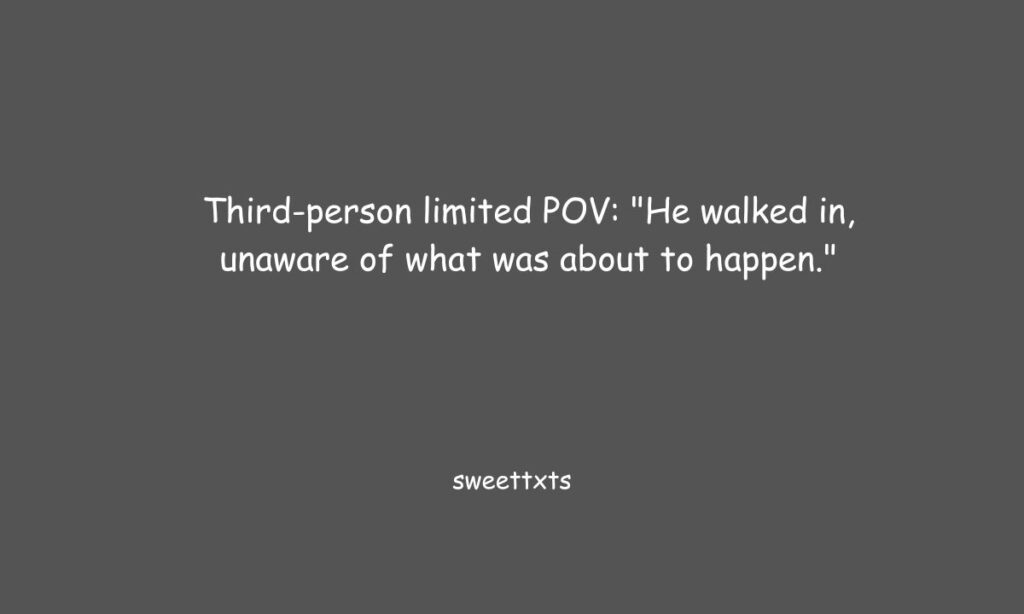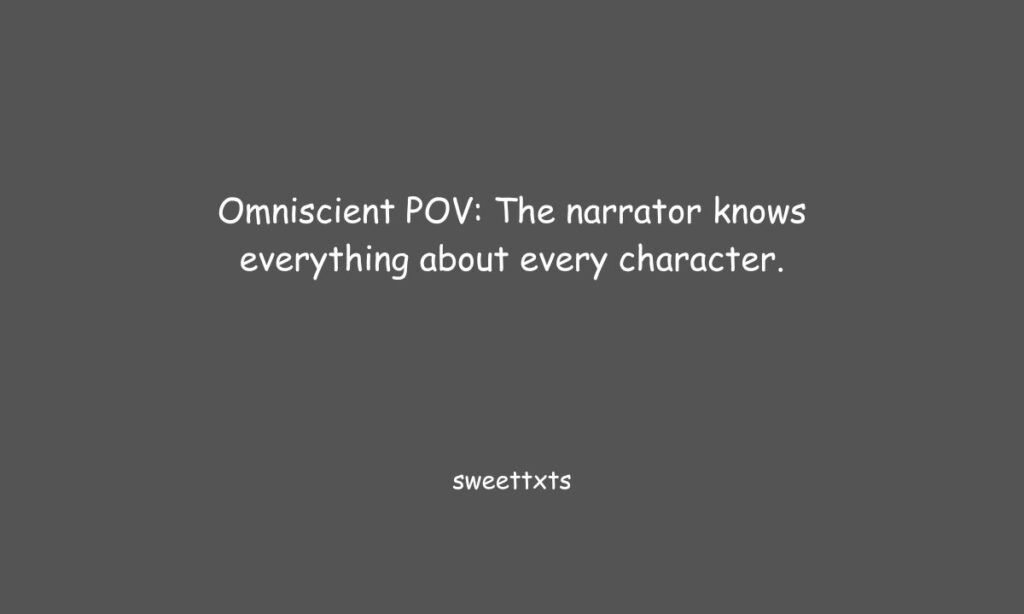POV means Point of View. It shows how someone sees or feels something. People use POV in stories, videos, and messages to share what they see or think.
We use POV in text to let others imagine a moment. It helps readers feel like they are part of the story. Saying “POV: You won a prize” makes the reader feel excited.
There are also best alternatives to POV like “from your view” or “picture this.” These words help when we want to sound kind, smart, or fun in talking or writing.
What Does POV Stand For?
The term POV stands for “Point of View.” It originated in literary and cinematic contexts, referring to the perspective from which a story is told. Over time, especially with the rise of short-form video platforms like TikTok, Instagram Reels, and YouTube Shorts, the term found a new niche, shaping how people share scenarios, mimic emotions, or dramatize situations.
POV Meaning in Text*
When used in text, “POV” often introduces a scenario or invites the reader to imagine themselves in a situation. For example:
- POV: You just opened your dream job acceptance email.
- POV: You’re the teacher’s favorite student in class.
- POV: It’s raining, but you love walking in the rain.
This phrasing lets the audience step into a role and feel the experience. It’s widely used to evoke empathy, humor, irony, or nostalgia.
Hiatus Meaning of POV
The hiatus meaning of “POV” relates to its transformation during a pause or gap in traditional communication methods. As language takes a break from conventional usage and adapts to new platforms, “POV” has evolved beyond academic or film jargon into a casual tool for storytelling and expression.
In other words, during the hiatus of formality, POV became the bridge between creative imagination and user interaction online. It’s a sign of how quickly language modernizes in the face of social trends.
Understanding POV in Different Contexts

1. Social Media & Casual Use
On platforms like TikTok or Twitter/X, POV creates a dramatic or humorous scene:
- POV: You forgot it was your anniversary and your partner walks in.
- POV: The customer is always right (but they’re clearly wrong).
These instances aim to connect emotionally or comically with the audience.
2. Storytelling & Writing
In writing or filmmaking, POV identifies the narrative lens:
- First-person POV: “I walked into the room.”
- Third-person limited POV: “He walked in, unaware of what was about to happen.”
- Omniscient POV: The narrator knows everything about every character.
Each point of view offers a different emotional experience.
3. Professional or Academic Settings
Even in professional communication, POV may be used to explain someone’s stance or opinion:
- “From a legal POV, this clause is ambiguous.”
- “From the client’s POV, the pricing seems too high.”
In these cases, it remains neutral and logical.
Tone and Nuance: Choosing the Right POV Style
The way “POV” is used greatly depends on tone:
| Tone | How “POV” is Used | Audience Example |
|---|---|---|
| Casual | Mimicking a funny or ironic scene | Friends, Followers |
| Emotional | Reliving a relatable experience | Romantic partner, Close circle |
| Professional | Reflecting a specific stance or lens | Clients, Business Meetings |
| Creative | Shaping story narration | Writers, Scriptwriters, Authors |
Each version tailors the reader’s emotional entry point into a shared scenario.
15 Best Examples of “POV” Usage
- POV: You just found out your cat can talk. 🐱
- POV: It’s your first day at Hogwarts. 🧙♂️
- POV: You’re watching your crush walk in the room. 💘
- POV: Your coffee spills the moment you sit down. ☕
- POV: The teacher calls your name and you weren’t listening. 🧠
- POV: You’re trying not to cry in a meeting. 😐
- POV: You forgot your password again. 🔐
- POV: You see your food coming in a restaurant. 🍔
- POV: You’re holding a mic at your best friend’s wedding. 🎤
- POV: You’re walking out of a toxic job for the last time. 🏃♀️
- POV: You walk into your surprise party pretending to be shocked. 🎉
- POV: You left your umbrella at home, and it’s pouring. ☔
- POV: You hit ‘Reply All’ by mistake. 📧
- POV: You’re dancing like nobody’s watching—except they are. 💃
- POV: You finally understand the math problem. 📘
These examples blend humor, relatability, and perspective, making them effective in social storytelling.
Alternatives to POV

Sometimes, “POV” may feel too casual or informal, especially in business or educational settings. Here are a few professional, polite, and casual alternatives:
Polite Alternatives
- From your angle
- Considering your experience
- As you see it
- In your eyes
📝 Example: “In your eyes, the delay may seem unnecessary, but here’s our reasoning.”
Professional Alternatives
- From a business perspective
- In terms of stakeholder viewpoint
- From the project lead’s angle
- As per analytical insight
📝 Example: “From a business perspective, this change improves overall efficiency.”
Casual Alternatives
- Imagine this
- It’s like when…
- Let’s say you’re…
- Just picture it
📝 Example: “Just picture it: You walk in and everyone’s clapping for you!”
These expressions help match the tone of the conversation without sacrificing clarity or professionalism.
When NOT to Use “POV”
Although “POV” is popular, it’s not suitable for every context:
- Avoid it in legal writing
- Avoid it in formal academic essays
- Avoid using it if the audience is unfamiliar with modern slang
In those settings, it’s better to rely on structured alternatives like “perspective,” “standpoint,” or “viewpoint.”
Why POV Captivates Audiences
The simplicity of “POV” lies in its ability to immediately place the reader/viewer into an experience. It plays on empathy and imagination, making it one of the most engaging formats for digital storytelling.
By saying “POV: You just won a million dollars”, the reader doesn’t need extra context. Their imagination fills in the emotion and excitement, creating instant connection.
Conclusion
Understanding the meaning of POV goes far beyond decoding an acronym. It reveals how language adapts during hiatuses from traditional grammar, morphing into a tool for creativity, relatability, and emotional resonance.
Whether you’re a content creator, a professional communicator, or just someone looking to connect with others meaningfully, knowing when and how to use “POV”—and what alternatives to use—can help you express your thoughts more clearly and creatively.

Daily blessings and uplifting messages by Drupmo for every morning, evening, and day of the week—bringing peace, hope, and inspiration to your soul.